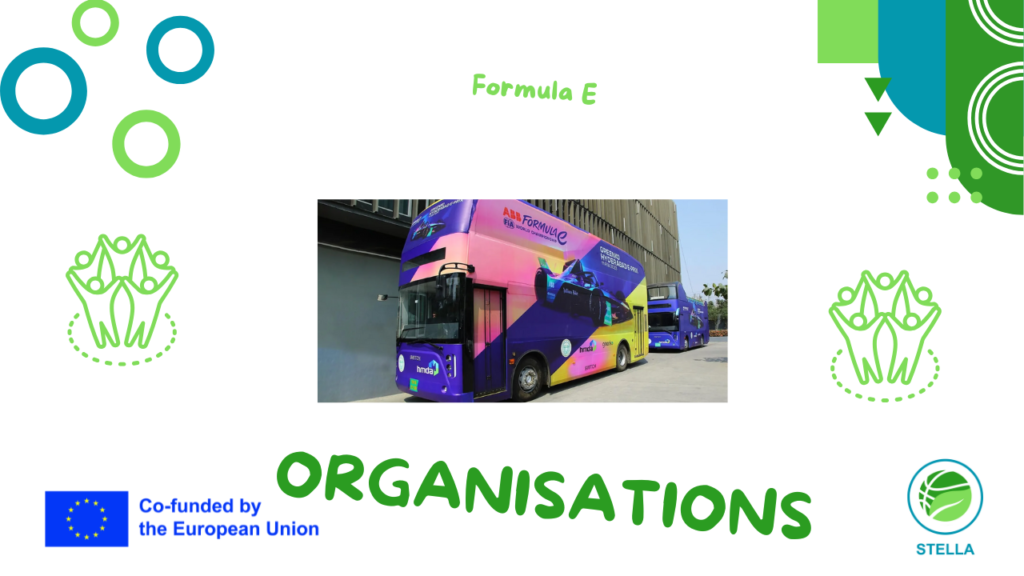
Formula E is the world’s first fully electric motorsport championship, established to showcase the potential of sustainable mobility and accelerate the shift towards a low-carbon future. Since its inaugural season in 2014, Formula E has merged innovation, sport, and environmental consciousness, using racing as a platform to drive advances in electric vehicle technology, renewable energy, and sustainable event practices across the globe.
Objectives:
- Promote electric mobility and renewable energy solutions to a global audience.
- Showcase sustainability innovation through high-performance sport.
- Reduce the environmental footprint of motorsport events.
- Inspire behaviour change among fans, cities, and industries towards sustainable practices.
- Partner with cities to develop sustainable urban mobility solutions.
Description:
Formula E has integrated sustainability across its entire operation, from the design of race cars to the management of events. Some of its key practices include:
- All-Electric Racing: All race cars are fully electric, eliminating direct CO₂ emissions during competition.
- Sustainable Event Management: Events are certified net zero carbon, with a focus on renewable energy use, sustainable transportation, waste reduction, and local environmental projects.
- City-Centre Racing: By hosting races on temporary street circuits in city centres (such as London, Berlin, New York City, and Jakarta), Formula E raises awareness about urban mobility challenges and solutions, while minimizing the need for permanent construction.
- Second-Life Battery Projects: Older Formula E car batteries are repurposed for energy storage projects rather than discarded, contributing to a circular economy approach.
- Partnerships for Progress: Formula E works with organisations such as UNICEF, the UN Environment Programme, and the World Bank to promote climate action, clean air, and youth engagement on sustainability.
Impact and Results:
- Formula E became the first global sport certified as having a net zero carbon footprint since inception.
- Since 2014, the championship has reached over 400 million viewers globally, elevating the profile of electric vehicles (EVs) and sustainable technology.
- Innovations developed for Formula E have influenced improvements in commercial EVs, including battery range, energy recovery systems, and lightweight materials.
- Through the “Race Against Climate Change” platform, Formula E has supported a wide range of social and environmental initiatives, from clean air campaigns to electric mobility education programmes.
- Events have increasingly set new benchmarks for sustainable sports management, inspiring other motorsports and sporting organisations to adopt greener practices.
Conclusion and Suggestions for Youth Workers and Youth Organisations:
Formula E highlights the power of using sport and entertainment as catalysts for environmental innovation and advocacy. For youth workers and organisations, this best practice shows that:
- Sustainability can be embedded into high-profile events without compromising excitement or engagement.
- Combining education, innovation, and popular culture (like motorsport) is a highly effective way to inspire young people towards climate action.
- Youth initiatives could mirror Formula E’s methods by integrating hands-on experiences, competitions, and partnerships with tech innovators to drive environmental awareness.
- Even at smaller scales, events can aim to be net zero carbon through careful planning, sustainable travel promotion, and educational tie-ins on clean energy.

 .
.
